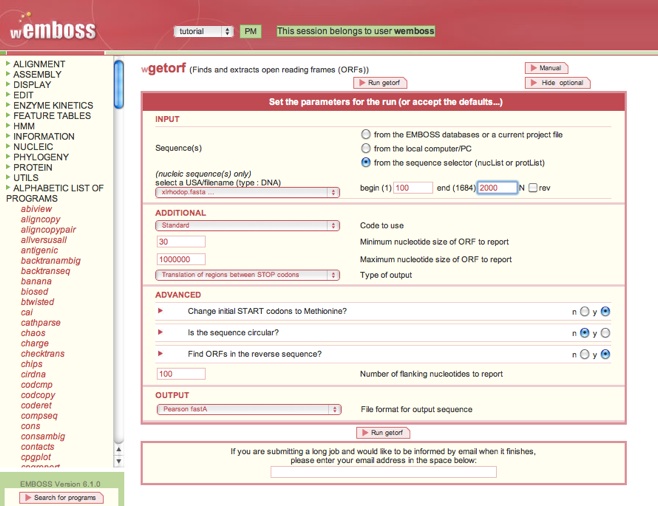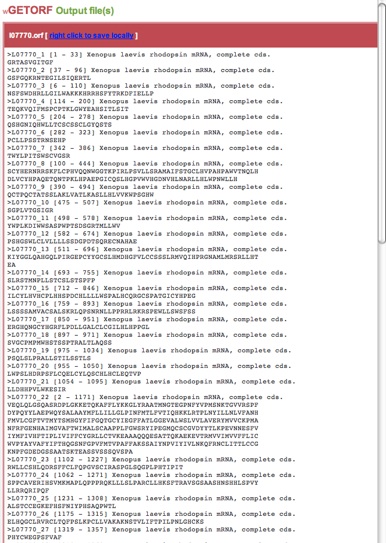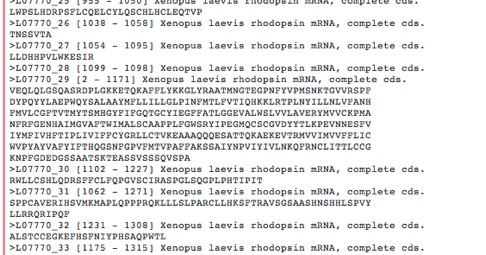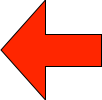Exercise: getorf


Finds and extracts open reading frames (ORFs)
Input sequence: xlrhodop
Make the choices:
Begin: 100
End: 2000 (this we know from plotorf)
Minimum nucleotide size of ORF to report: 0
Maximum nucleotide size of ORF to report: 1000000
Type of output: Nucleic sequence between START and STOP codons
Run getorf
Notice that you can specify the organism whose codon usage table is most appropriate for your sequence, and you can also choose the type of information that is reported to you. In our case, we are simply interested in the positions of the start and stop codons for this sequence. Plotorf is just a graphical representation of the textual information produced by getorf. Since we asked for all ORFs above a minimum size to be reported, getorf is telling us about a number of potential ORFs. We know from plotorf that our ORF will be in the region 0 to 1200, so scroll through the output file, xlrhodop.orf, until you identify this. What are the actual start and end positions? (hint: look at the red arrow)
Program: getorf




